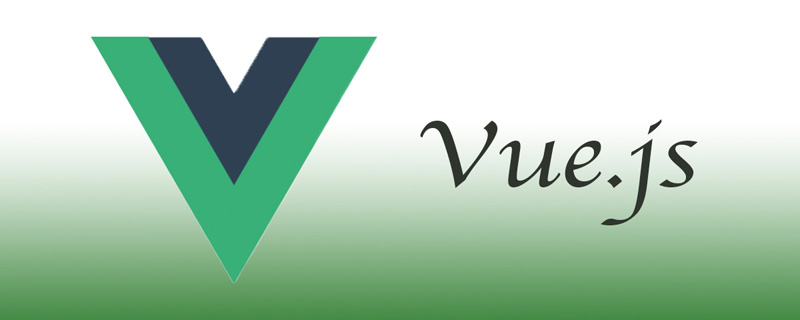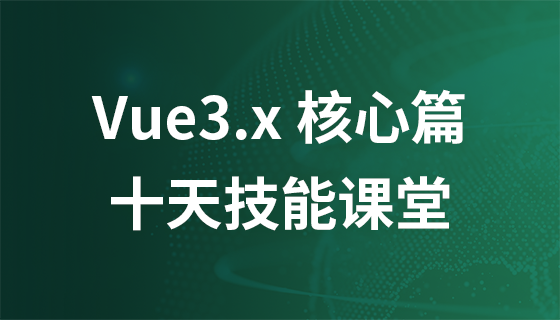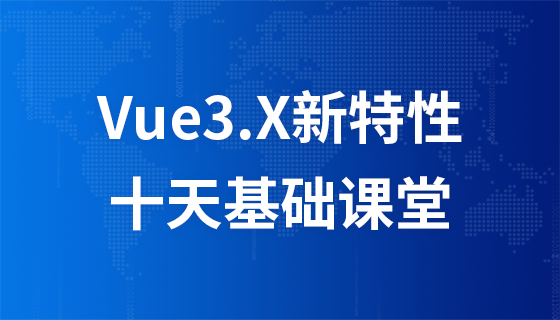本篇文章带大家聊聊vue2.x中this的指向问题,介绍一下this为什么指向vue实例,希望对大家有所帮助!

组内代码走查偶然提起为什么this可以直接调用到data、methods和props、computed里的值,然后大家都有一些猜想,但没有一个明确的答案,为搞清这个问题,查阅了vue的源码,有一些了解,写个文章记录一下。
正常开发vue代码,大差不差都会这么写
export default {
data() {
return {
name: '彭鱼宴'
}
},
methods: {
greet() {
console.log(`hello, 我是${this.name}`)
}
}
}为什么这里的this.name可以直接访问到data里定义的name呢,或者this.someFn可以直接访问到methods里定义的函数呢,带着这个问题开始看vue2.x的源码找答案。
立即学习“前端免费学习笔记(深入)”;
这里先贴个vue的源码地址vue源码。我们先看看vue实例的构造函数,构造函数在源码的目录/vue/src/core/instance/index.js下,代码量不多,全部贴出来看看
function Vue (options) {
if (process.env.NODE_ENV !== 'production' &&
!(this instanceof Vue)
) {
warn('Vue is a constructor and should be called with the `new` keyword')
}
this._init(options)
}
initMixin(Vue)
stateMixin(Vue)
eventsMixin(Vue)
lifecycleMixin(Vue)
renderMixin(Vue)
export default Vue构造函数很简单,if (!(this instanceof Vue)){} 判断是不是用了 new 关键词调用构造函数,没有则抛出warning,这里的this指的是Vue的一个实例。如果正常使用了new关键词,就走_init函数,是不是很简单。
_init函数分析
let uid = 0
export function initMixin (Vue: Class<Component>) {
Vue.prototype._init = function (options?: Object) {
const vm: Component = this
// a uid
vm._uid = uid++
let startTag, endTag
/* istanbul ignore if */
if (process.env.NODE_ENV !== 'production' && config.performance && mark) {
startTag = `vue-perf-start:${vm._uid}`
endTag = `vue-perf-end:${vm._uid}`
mark(startTag)
}
// a flag to avoid this being observed
vm._isVue = true
// merge options
if (options && options._isComponent) {
// optimize internal component instantiation
// since dynamic options merging is pretty slow, and none of the
// internal component options needs special treatment.
initInternalComponent(vm, options)
} else {
vm.$options = mergeOptions(
resolveConstructorOptions(vm.constructor),
options || {},
vm
)
}
/* istanbul ignore else */
if (process.env.NODE_ENV !== 'production') {
initProxy(vm)
} else {
vm._renderProxy = vm
}
// expose real self
vm._self = vm
initLifecycle(vm)
initEvents(vm)
initRender(vm)
callHook(vm, 'beforeCreate')
initInjections(vm) // resolve injections before data/props
initState(vm)
initProvide(vm) // resolve provide after data/props
callHook(vm, 'created')
/* istanbul ignore if */
if (process.env.NODE_ENV !== 'production' && config.performance && mark) {
vm._name = formatComponentName(vm, false)
mark(endTag)
measure(`vue ${vm._name} init`, startTag, endTag)
}
if (vm.$options.el) {
vm.$mount(vm.$options.el)
}
}
}_init函数有点长,做了很多事情,这里就不一一解读,和我们此次探索相关的内容应该在initState(vm)这个函数中,我们继续到initState这个函数里看看。
initState函数分析
export function initState (vm: Component) {
vm._watchers = []
const opts = vm.$options
if (opts.props) initProps(vm, opts.props)
if (opts.methods) initMethods(vm, opts.methods)
if (opts.data) {
initData(vm)
} else {
observe(vm._data = {}, true /* asRootData */)
}
if (opts.computed) initComputed(vm, opts.computed)
if (opts.watch && opts.watch !== nativeWatch) {
initWatch(vm, opts.watch)
}
}可以看出initState做了5件事情
我们先重点看看初始化methods做了什么
initMethods 初始化方法
function initMethods (vm, methods) {
var props = vm.$options.props;
for (var key in methods) {
{
if (typeof methods[key] !== 'function') {
warn(
"Method \"" + key + "\" has type \"" + (typeof methods[key]) + "\" in the component definition. " +
"Did you reference the function correctly?",
vm
);
}
if (props && hasOwn(props, key)) {
warn(
("Method \"" + key + "\" has already been defined as a prop."),
vm
);
}
if ((key in vm) && isReserved(key)) {
warn(
"Method \"" + key + "\" conflicts with an existing Vue instance method. " +
"Avoid defining component methods that start with _ or $."
);
}
}
vm[key] = typeof methods[key] !== 'function' ? noop : bind(methods[key], vm);
}
}initMethods主要是一些判断:
判断methods中定义的函数是不是函数,不是函数就抛warning; 判断methods中定义的函数名是否与props冲突,冲突抛warning; 判断methods中定义的函数名是否与已经定义在Vue实例上的函数相冲突,冲突的话就建议开发者用_或者$开头命名;
除去上述说的这些判断,最重要的就是在vue实例上定义了一遍methods里所有的方法,并且使用bind函数将函数的this指向Vue实例上,就是我们new Vue()的实例对象上。
这就解释了为啥this可以直接访问到methods里的方法。
initData 初始化数据
function initData (vm) {
var data = vm.$options.data;
data = vm._data = typeof data === 'function'
? getData(data, vm)
: data || {};
if (!isPlainObject(data)) {
data = {};
warn(
'data functions should return an object:\n' +
'https://vuejs.org/v2/guide/components.html#data-Must-Be-a-Function',
vm
);
}
// proxy data on instance
var keys = Object.keys(data);
var props = vm.$options.props;
var methods = vm.$options.methods;
var i = keys.length;
while (i--) {
var key = keys[i];
{
if (methods && hasOwn(methods, key)) {
warn(
("Method \"" + key + "\" has already been defined as a data property."),
vm
);
}
}
if (props && hasOwn(props, key)) {
warn(
"The data property \"" + key + "\" is already declared as a prop. " +
"Use prop default value instead.",
vm
);
} else if (!isReserved(key)) {
proxy(vm, "_data", key);
}
}
// observe data
observe(data, true /* asRootData */);
}initdata做了哪些事情呢:
再看下proxy函数做了什么:
function noop (a, b, c) {}
var sharedPropertyDefinition = {
enumerable: true,
configurable: true,
get: noop,
set: noop
};
function proxy (target, sourceKey, key) {
sharedPropertyDefinition.get = function proxyGetter () {
return this[sourceKey][key]
};
sharedPropertyDefinition.set = function proxySetter (val) {
this[sourceKey][key] = val;
};
Object.defineProperty(target, key, sharedPropertyDefinition);
}其实这里的Object.defineProperty就是用来定义对象的
proxy的用处就是使this.name指向this._data.name
剩下的observe函数不在此次探讨范围,感兴趣的朋友可以自己去看看源码。
回到一开始抛出的问题做一个解答:
methods里的方法通过 bind 指定了this为 new Vue的实例(vm),methods里的函数也都定义在vm上了,所以可以直接通过this直接访问到methods里面的函数。
data函数返回的数据对象也都存储在了new Vue的实例(vm)上的_data上了,访问 this.name时实际访问的是Object.defineProperty代理后的 this._data.name。
至于data的这种设计模式的优缺点,大家也可以继续探索,毕竟不在此次问题讨论之中。
【相关推荐:vue.js视频教程】
以上就是聊聊vue2.x中this的指向问题,它为什么指向vue实例?的详细内容,更多请关注php中文网其它相关文章!

每个人都需要一台速度更快、更稳定的 PC。随着时间的推移,垃圾文件、旧注册表数据和不必要的后台进程会占用资源并降低性能。幸运的是,许多工具可以让 Windows 保持平稳运行。




Copyright 2014-2025 https://www.php.cn/ All Rights Reserved | php.cn | 湘ICP备2023035733号